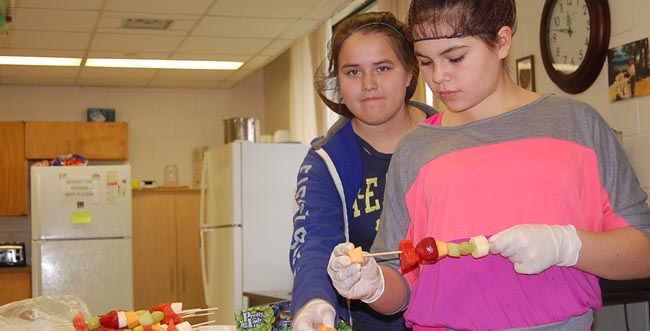Blue-ribbon month for Sagamok

By Colleen Toulouse
SAGAMOK ANISHNAWBEK–It’s a blue-ribbon month in this North Shore First Nation as community members stage a number of activities designed to promote awareness of Diabetes, especially among children.
Blue awareness ribbons were placed throughout the community at the beginning of the month to kick off the campaign, which was initiated by the Early Childhood Parent Committee (ECDPC), a group of community members/parents working to increase the number of families with children participating in healthy lifestyle choices.
“For many people, diabetes can be prevented or delayed by understanding its risk factors and making important lifestyle changes,” says Arnelda Bennett, committee chairperson. “Diabetes is a growing health concern.
According to the Canadian Diabetes Association Type 2 Diabetes is becoming more prevalent among children as young as eight, and the incidence appears to be increasing rapidly.
The 190 students of Biidaaban Kinoomaagegamik focussed on healthy eating. The Junior Kindergarten had a school-wide sale of fruit kabobs and veggie trays, and some Grade 7 students helped raise over $300 to be donated to the Canadian Diabetes Association.
“The school also displayed Diabetes prevention resources from the Southern Ontario Aboriginal Diabetes Initiative and the Canadian Diabetes ASssociation,” said Principal Marjorie Owl. “We developed a more creative and healthier menu for our hot lunch program, and held a Just Move it — Healthy Choices Walk.”
Staff at Shki Waase Aabin Day Care chose November 14 — World Diabetes Day – to hold a nutrition bingo and a blue balloon release.
Arnelda Bennett said the campaign was also designed to support activities and services delivered by community health service providers.
“This initiative could also lead to a range of primary prevention, screening and treatment programs. With assistance from other organizations in the community, this could lead to care management initiatives that are community-based and culturally appropriate.”


